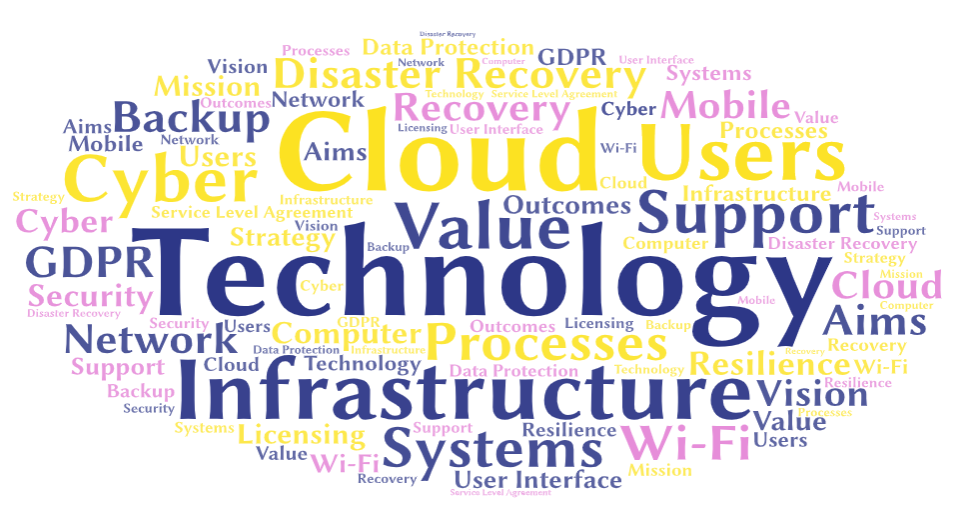
I have recently been wondering about whether there is a need for a digital strategy. I had always considered it important that every school had a digital strategy however more recently I have been wondering does the need for a digital strategy vary with a schools technology maturity? If a school has technology which is reasonably well embedded is there still the same need for a digital strategy?
Getting started
At the early stages of technology use in a school I believe it is very important for a digital strategy to exist. You are managing software and hardware requirements, underpinning infrastructure, maybe device end points as well as training and communication. And it’s all new to you as you are only getting started. There are a lot of moving pieces and a lot of interrelated decisions, plus there is the whole issue of change management and bringing people with you. The need for a strategy is key in planning all of this but also in showing people where they are going and charting a path there. Without the strategy you may have different people pulling in different directions.
Mature technology usage
When however, you get to mature technology usage and your systems and processes are more embedded the challenges are different. Significant change is much more difficult as you are no longer moving from a blank slate. You are likely from a situation where technology is being used and is likely having benefits, albeit there may be issues which are leading to considering change. Consider moving from iPads to Windows Laptops for staff for example; Your staff will be aware of the benefits of the iPads given they use them so availability bias plays its part here in that we know with certainty the benefits of our current setup however the benefits of the planned new solution are not as clear or definite, therefore we over weight our current setup. In terms of the drawbacks of the iPads, we are aware of these too however given we are using iPads we equally already have workarounds or simply sub-optimal processes whereas for the new solutions we are only predicting the possible drawbacks, so again we come back in favour of our current setup. And the same issue arises if you are looking at changing an established MIS system or various other bits of technology. You also have the issue that different technologies and associated processes might be tightly integrated, meaning any new solution, which would be a different solution, would need to be able to be equally tightly integrated, where this is seldom guaranteed.
If not technology strategy, what?
Once you have a relatively mature technology usage I suspect rather than significant change, it is more like iterative or evolutionary change. The technology is more transparent rather than having a more central focus. There isnt the same need for a three-year strategic roadmap and the ongoing renewal of infrastructure should be a simple matter of operational process. So, given we accept technology continues to evolve, if it isnt digital strategy, what is it? In a recent chat with Ian Yorston he planted the idea of Digital Culture with me and I think that is exactly what we should be looking to develop, where technology is simply the way we do things around here, supporting the overall objectives and aims of the school. And culture is something that changes more slowly based on the stories and the narratives told around school, so we need to be paying more attention to this. So its about having the opportunities to constantly review the narratives around technology use in school, to assess the impact and value and iterate and evolve. In my school this is our IT Management Group but also working parties such as our AI working party. It is also feedback processes through SLT and through Heads of Department. I don’t think we have it 100% nailed by any means but then again if things are constantly evolving maybe this is to be expected. One of the things I want to do more of is look to the “how we measure” impact and value and the how we know things are working or not.
Conclusion
Maybe a technology strategy is very important to get started, but maybe once technology is embedded it’s all about developing the culture and softer adjustments and changes around the edges.
And maybe it easier to show change and impact in the beginning which makes it easier to demonstrate the impact or progress against the strategy. Once technology is more embedded this isnt so easy to measure or assess which means we need to start looking deeper, and this is something I hope to look into over the coming months.


 I have been planning to post on IT strategy in relation to some of the areas which I believe need to be considered. Initially my thought was for a single post covering a number of different points, some being obvious and some less so obvious, however as soon as I started writing it became clear that each point could be a post in itself or would result in a really long single post. As such I decided to undertake a number of separate posts of which this is the first:
I have been planning to post on IT strategy in relation to some of the areas which I believe need to be considered. Initially my thought was for a single post covering a number of different points, some being obvious and some less so obvious, however as soon as I started writing it became clear that each point could be a post in itself or would result in a really long single post. As such I decided to undertake a number of separate posts of which this is the first: I remember someone telling me that IT is the 3rd most expensive thing in a school after staffing costs and the cost of the building and school estate. With such a large part of a schools finances invested in technology it is important to make sure that we are getting value. Now I note my use of the word “value” as opposed to impact; This is due to impact being often associated with examination outcomes. In my view this is a narrow view on technologies potential within education. Exam results, for example, don’t provide a measure of the positive effect which technology can have to a student with Asperger’s who previously found it difficult to interact with the classroom discussion but now can do so easily via an online chat facility. For me value suggests a broader classification which might include using technology to engage a particular student who previously wouldn’t or couldn’t access learning, like in the above example, it might include introducing new experiences to students which were either difficult, dangerous or costly without tech or it might be using technology to bring about new more efficient processes for teachers such as dictation of feedback, etc. Value is much more diverse and also context specific than exam results. Seeking value in our technology should be a key objective in all technology decision making but mustn’t be confused with cost cutting.
I remember someone telling me that IT is the 3rd most expensive thing in a school after staffing costs and the cost of the building and school estate. With such a large part of a schools finances invested in technology it is important to make sure that we are getting value. Now I note my use of the word “value” as opposed to impact; This is due to impact being often associated with examination outcomes. In my view this is a narrow view on technologies potential within education. Exam results, for example, don’t provide a measure of the positive effect which technology can have to a student with Asperger’s who previously found it difficult to interact with the classroom discussion but now can do so easily via an online chat facility. For me value suggests a broader classification which might include using technology to engage a particular student who previously wouldn’t or couldn’t access learning, like in the above example, it might include introducing new experiences to students which were either difficult, dangerous or costly without tech or it might be using technology to bring about new more efficient processes for teachers such as dictation of feedback, etc. Value is much more diverse and also context specific than exam results. Seeking value in our technology should be a key objective in all technology decision making but mustn’t be confused with cost cutting.